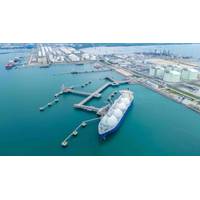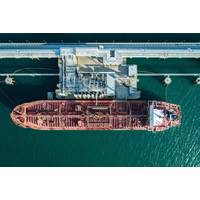Low Returns Put Lid on New British Gas Storage
Investment in new, large gas storage sites in Britain which can help provide a buffer in times of high demand and reduced supply is seen by operators as unlikely due to market prices offering low returns.
This is due to weak gas price spreads, the difference between gas prices in summer and winter, which are not allowing operators to cover their fixed costs.
The spread has narrowed in recent years, making it less profitable to buy gas in the warmer months, store it and sell when temperatures fall and prices rise.
"If we were to see any new gas storage it will be small-scale and fast-cycle. I would be surprised if saw any more seasonal gas storage," Roddy Monroe, chair of the Gas Storage Operators Group and former head of regulatory affairs at Centrica Storage, told the Britain's Business, Energy and Industrial Strategy parliamentary committee on Wednesday.
Centrica closed Britain's largest gas storage facility last year as it had become too costly to maintain the ageing Rough offshore site, leaving the country with storage capacity equivalent to four to five days of winter demand.
This was down from 15 days previously and in March this year a cold snap triggered a warning of shortages, driving a spike in wholesale gas prices to their highest in at least a decade.
Gas storage is used as a buffer at times of high demand and disrupted supply, which can result from infrastructure outages. Since a government assessment in 2013 suggesting Britain would need to double its existing gas storage capacity, it has halved.
And although the gas industry called for a review of Britain's storage capacity the government declined, saying market forces would ensure there is enough gas.
Duncan Burt, director of operations at National Grid, said there are different sources of gas which can be brought into Britain to provide flexibility.
"Under severe events (like this March), that system has worked to deliver gas into the storage - whether it is additional gas stored on a boat (liquefied natural gas) or whether through a pipeline...We cannot see the need for specific additional storage," he told the committee.
Since 2008, existing capacity has been either mothballed where investment is required or closed, like Rough, which was Britain's only long-range storage site.
Other sites are medium-range which have much shorter injection and withdrawal times and hold much less gas.
To upgrade Rough would have cost less than 1 billion pounds ($1.3 billion), but the seasonal gas price spread would have had to almost double to around 20 pence per therm from around 10 pence currently to justify this cost, Monroe said.
That spread was 50 p/therm 10 years ago, Refinitiv Eikon data shows.
($1 = 0.7829 pounds)
(Reporting by Nina Chestney Editing by Alexander Smith)





